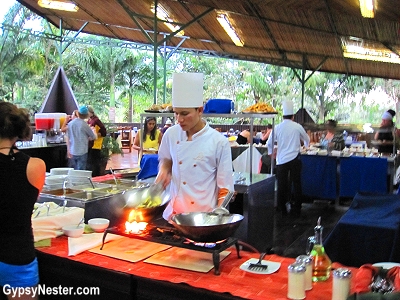
Food poisoning abroad is a topic discussed frequently in the British papers these days, as the government looks to make changes in how much money people can claim back in compensation and holiday tour operators threaten British holiday goers with bans and price hikes for frequent complaints and claims; in the meantime, not a lot of thought is being given to hotels and resorts with unhygienic food practices, causing guests to experience food poisoning in the first place.
People don’t often think of themselves as consumers when they purchase a holiday package, not in the same way that they would if they were to purchase an expensive TV or new smartphone. However, the average British family spends £4792 for a two week break – many of whom do this every summer. Getting exactly what you have paid for, including safely prepared and stored food and drink, is paramount.
While you can claim food poisoning compensation if you do happen to fall victim to this when you’re on holiday; it is even better to avoid this completely and get the full enjoyment from your stay. Here are our top tips for avoiding holiday sickness.
Food
If you’re at the hotel buffet be cautious with cold meats, salad or seafood. These may not have been prepared properly or may have been washed with unclean water. Food should be properly cooked and maintained at an appropriate temperature. Beware foods that are left uncovered too. If you don’t realise that something is lukewarm or cold until you have actually picked it up, don’t eat it. Just put it in the bin and avoid the food poisoning!
Drink
It only takes a second to wipe down your glass at dinner before using it. Who cares what other people think of the practice, wiping down glasses and cutlery and inspecting them before use can protect you from staff that may not have washed their hands or washed their dinnerware properly.
Pool
A cloudy pool may be a sign of neglect. If the pool is not cleaned or the water is untreated, this can be a big risk germ wise, as many people do not shower before diving in. A dirty pool can also signpost neglect elsewhere when it comes to cleanliness in the hotel, so be on your guard.
What should I do if I do get sick?
Firstly, determine whether or not it is actually food poisoning. A local doctor may be able to test you for common bacteria, or you may be able to do this once you return home. Dehydration or too much booze can be responsible for sickness, with many mistaking their symptoms for food poisoning.
You should lodge a complaint with your hotel if you suspect food poisoning. If you have seen any unhygienic practices that make you suspect that it is the fault of your hotel, then document them before you make your complaint – ideally, document anything like this throughout your stay.
Get yourself treated, take relief tablets, probiotics, rehydrate yourself and possibly use the BRAT diet – bananas, rice, applesauce and toast (along with clean water) which is a temporary diet advised for ill children who cannot take relief tablets.
It is impossible to completely eliminate the risk of food poisoning abroad, but with some tactics and knowledge, it is possible to minimise the danger and avoid ruining your long awaited getaway.
We are happy to present this collaborative post to offer valuable information to our readers.



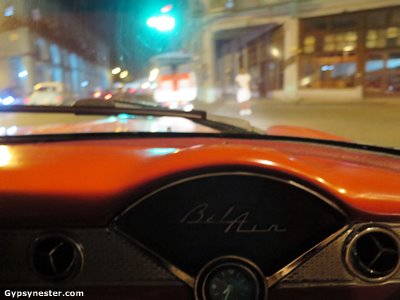
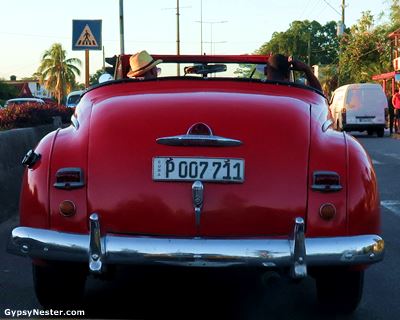 Not only were the cars banned, but also parts, so innovative owners improvised and machine shops sprung up to create replacements that kept the wheels rolling. That made sense to me several decades ago, but it seemed to me that too much time had passed now for these vintage vehicles to still be operational.
Not only were the cars banned, but also parts, so innovative owners improvised and machine shops sprung up to create replacements that kept the wheels rolling. That made sense to me several decades ago, but it seemed to me that too much time had passed now for these vintage vehicles to still be operational.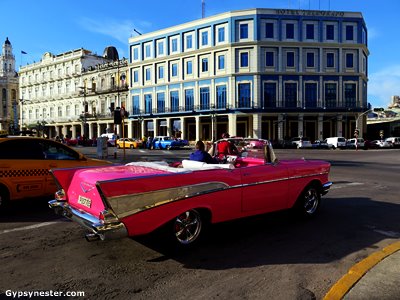 Several more examples, in various conditions, passed us by before we pulled up next to a cherry 1957 Chevy Bel Air Convertible.
Several more examples, in various conditions, passed us by before we pulled up next to a cherry 1957 Chevy Bel Air Convertible.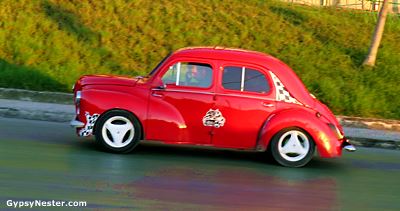
 Our first night, when we called a taxi to take us out for
Our first night, when we called a taxi to take us out for 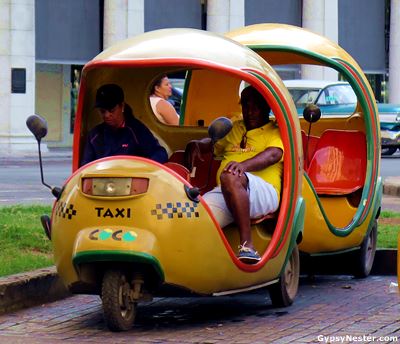 Not all of the taxis are heavy metal though, some are fiberglass. These three-wheeled motorcycle motored rickshaw style buggies are called Cocotaxis, because the bodies look like coconuts.
Not all of the taxis are heavy metal though, some are fiberglass. These three-wheeled motorcycle motored rickshaw style buggies are called Cocotaxis, because the bodies look like coconuts.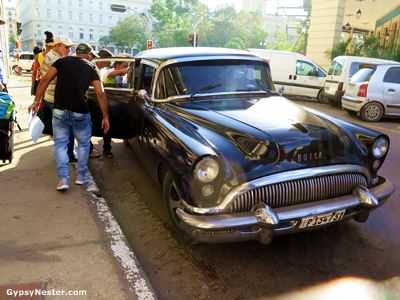
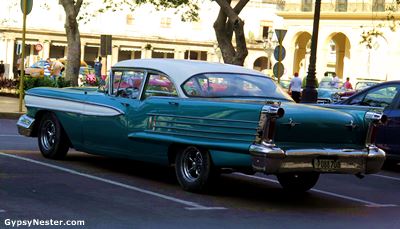
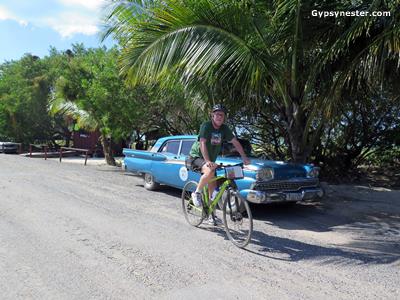
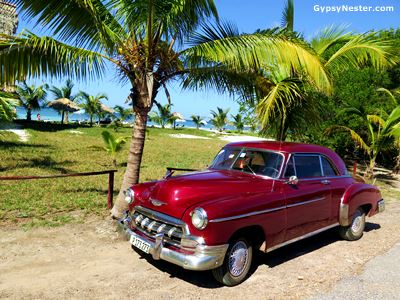
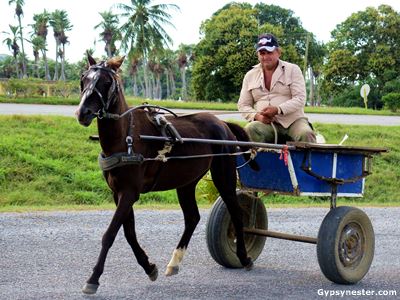 Sometimes the vehicles we encountered weren’t cars at all. While biking through the countryside we often shared the road with horse drawn carts.
Sometimes the vehicles we encountered weren’t cars at all. While biking through the countryside we often shared the road with horse drawn carts. We had vaguely heard of a Desoto, but certainly never seen, much less ridden, in one. With some investigation we learned that DeSoto was a division of the Chrysler Corporation from 1928 to the 1961.
We had vaguely heard of a Desoto, but certainly never seen, much less ridden, in one. With some investigation we learned that DeSoto was a division of the Chrysler Corporation from 1928 to the 1961.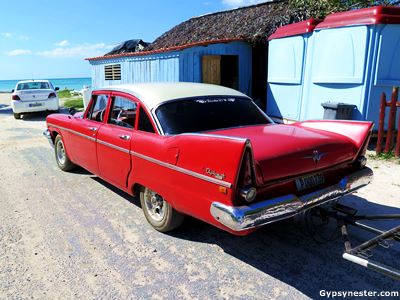 Perhaps inspired by the name, we diplomatically inquired of our driver what the value of a ride like this would be.
Perhaps inspired by the name, we diplomatically inquired of our driver what the value of a ride like this would be.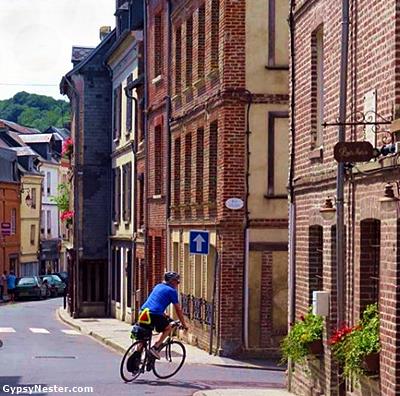
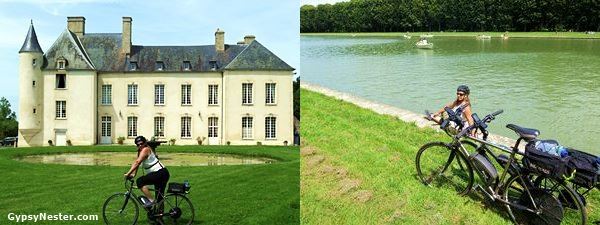
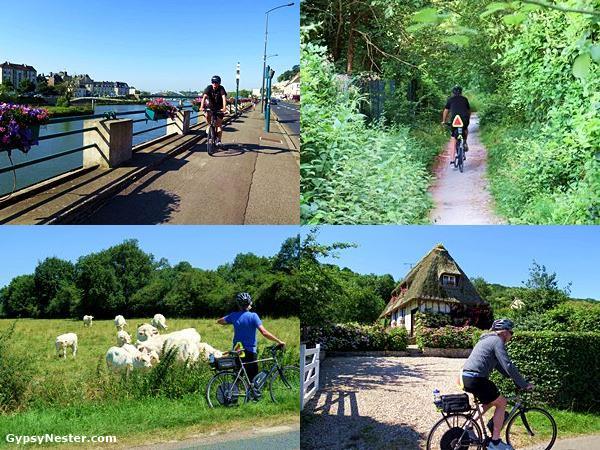
 As we set out through the outskirts of
As we set out through the outskirts of  History came alive as we climbed up to Richard the Lionheart’s Château Gaillard built in 1196, stood where Joan of Arc was burned at the stake, and rode right through the center of the D-day invasion at Omaha Beach.
History came alive as we climbed up to Richard the Lionheart’s Château Gaillard built in 1196, stood where Joan of Arc was burned at the stake, and rode right through the center of the D-day invasion at Omaha Beach.
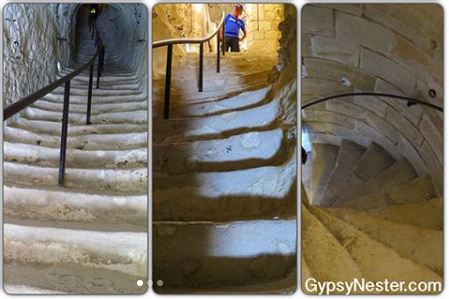 We even had the energy left to climb 396 steps up to the top of the tower at Château de La Roche Guyon, where Field Marshal Rommel commanded the Axis forces as they fought to hold off the allied invasion.
We even had the energy left to climb 396 steps up to the top of the tower at Château de La Roche Guyon, where Field Marshal Rommel commanded the Axis forces as they fought to hold off the allied invasion. By the time we made it to the garden that inspired many of Monet’s most notable paintings, and Vincent van Gogh’s last home just outside of Paris, we were firm believers in assisted living, or should we say pedaling.
By the time we made it to the garden that inspired many of Monet’s most notable paintings, and Vincent van Gogh’s last home just outside of Paris, we were firm believers in assisted living, or should we say pedaling.
 Another cool feature of the system that we grew to seriously appreciate was the ability to use the charging mode as a braking device on downhill stretches.
Another cool feature of the system that we grew to seriously appreciate was the ability to use the charging mode as a braking device on downhill stretches.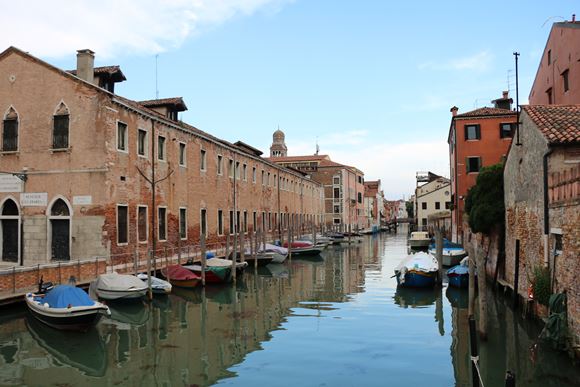
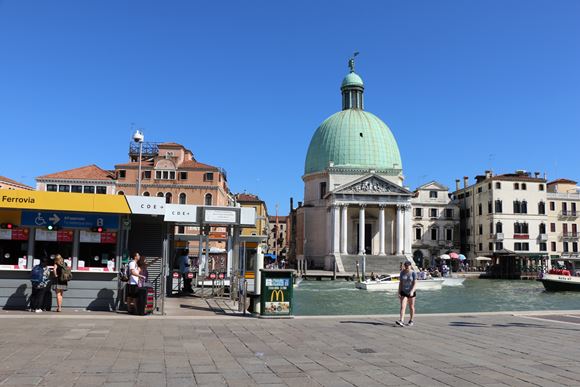


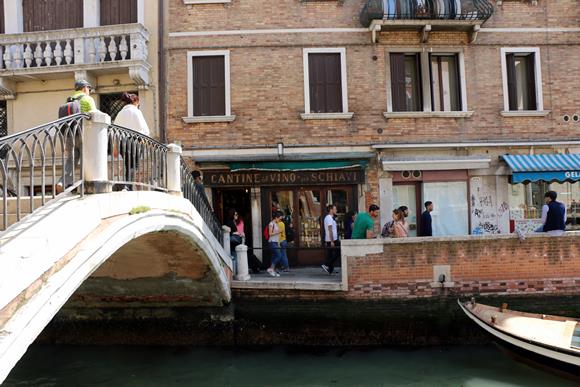

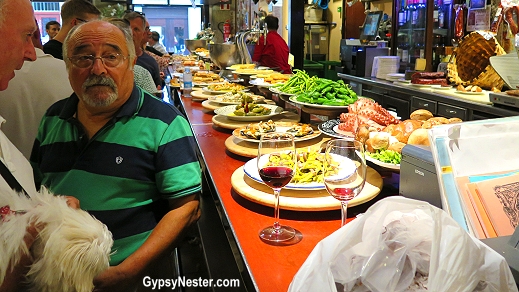
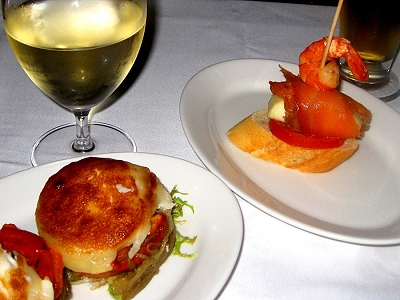 Our introduction to the Spanish version of this concept was in
Our introduction to the Spanish version of this concept was in 

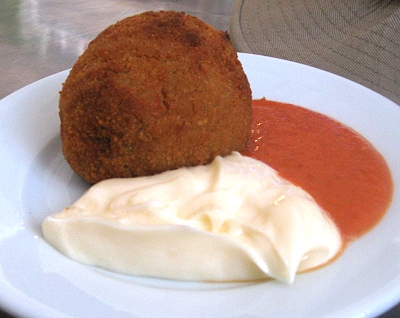
 As we got more adventurous we expanded our culinary horizon to try calamari, chorizo al vino, mussels, and blood sausage.
As we got more adventurous we expanded our culinary horizon to try calamari, chorizo al vino, mussels, and blood sausage.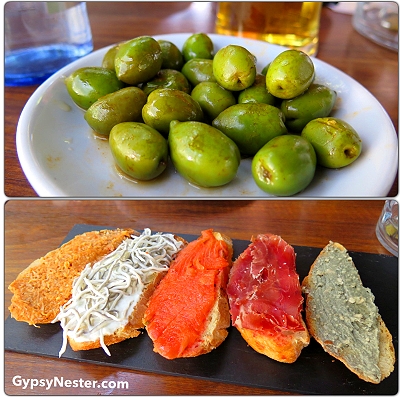 Ducking into the shade at a sidewalk café, we opted to blindly order a combination plate of five tapas and take our chances as to what might show up. Classic Iberian ham, fish with garlic, crab, salmon, and some ridiculously strong blue cheese arrived, so we were thrilled.
Ducking into the shade at a sidewalk café, we opted to blindly order a combination plate of five tapas and take our chances as to what might show up. Classic Iberian ham, fish with garlic, crab, salmon, and some ridiculously strong blue cheese arrived, so we were thrilled.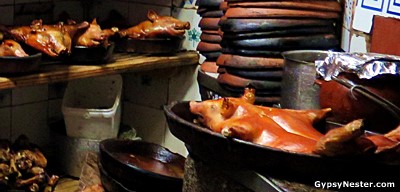
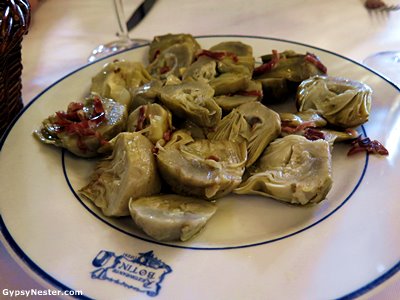 For good measure, we also added some artichoke hearts with Iberian ham, which could have been a tapa, and were unbelievable. They must not have had this dish back in Hemingway’s day or it would have deserved a whole chapter.
For good measure, we also added some artichoke hearts with Iberian ham, which could have been a tapa, and were unbelievable. They must not have had this dish back in Hemingway’s day or it would have deserved a whole chapter.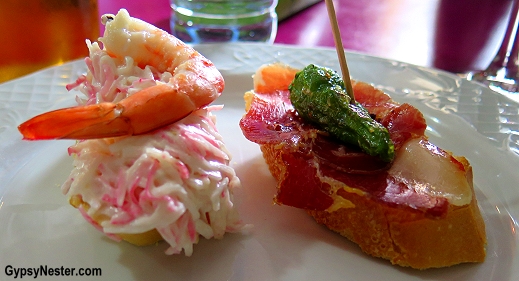

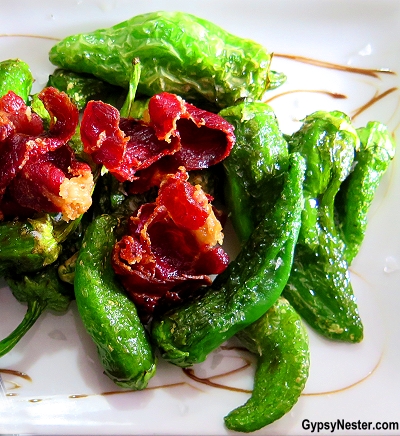 These pan fried peppers are to die for. Most are mild, but every now and then a hot one sneaks in. As an added bonus, they were made off the charts incredible by adding crispy, fried Iberian ham.
These pan fried peppers are to die for. Most are mild, but every now and then a hot one sneaks in. As an added bonus, they were made off the charts incredible by adding crispy, fried Iberian ham.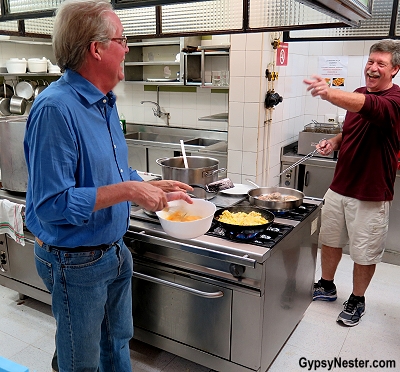 The idea is get together to cook, and of course eat, while trying out new recipes and ideas along with a healthy dose of socializing.
The idea is get together to cook, and of course eat, while trying out new recipes and ideas along with a healthy dose of socializing.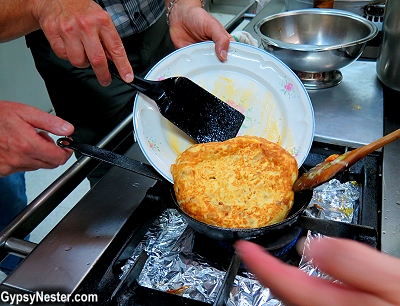
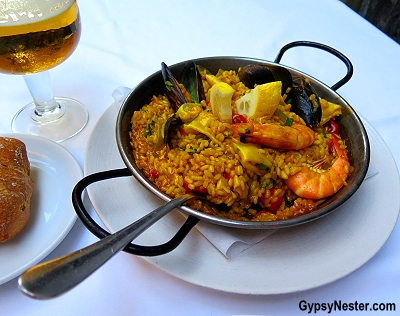 So with nothing more than luck to guide us, we picked one of the many eateries available in the old city center and happened upon a good pan of the classic seafood and rice dish.
So with nothing more than luck to guide us, we picked one of the many eateries available in the old city center and happened upon a good pan of the classic seafood and rice dish.